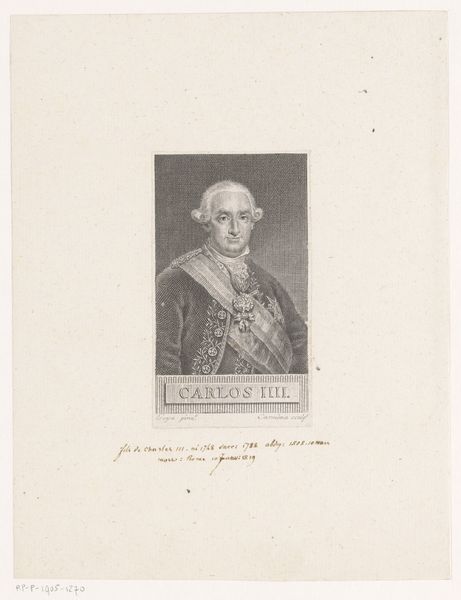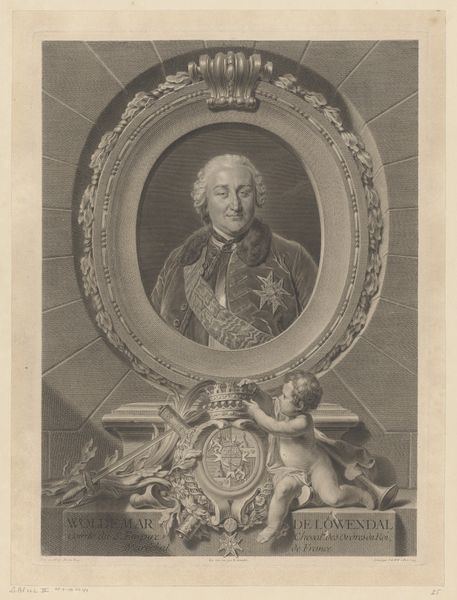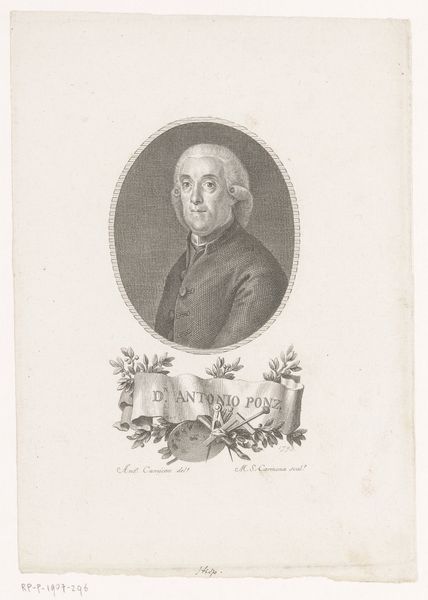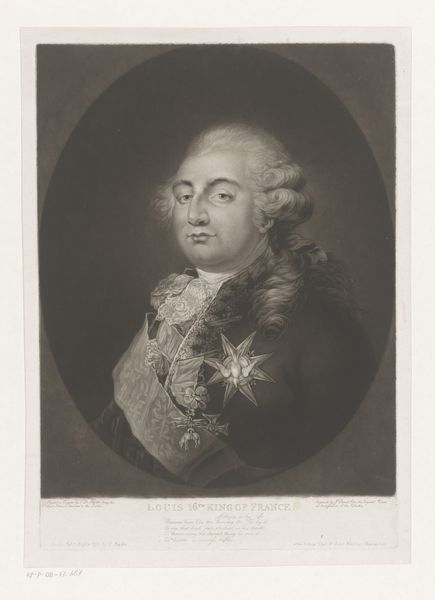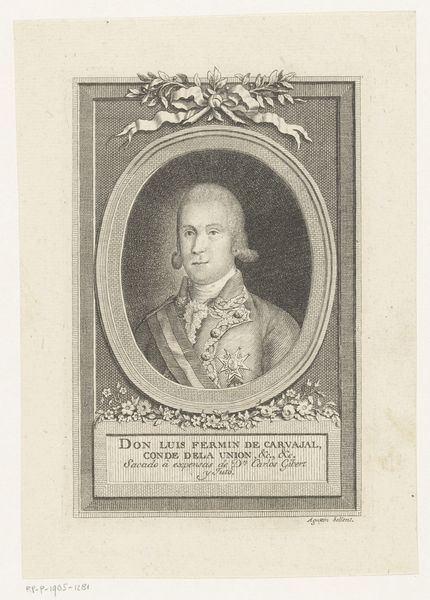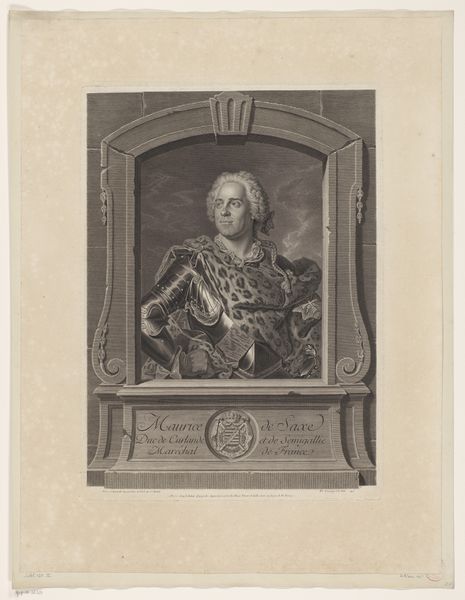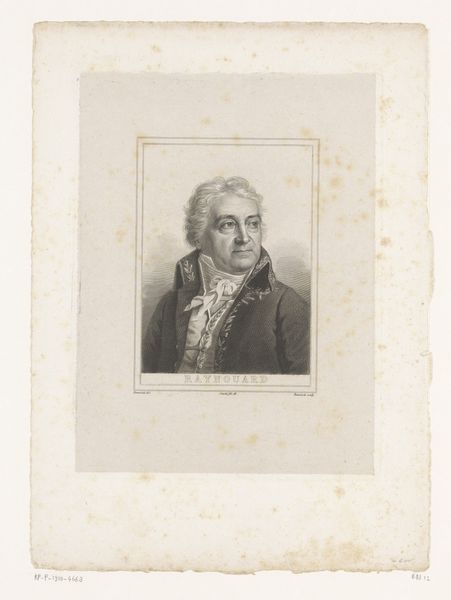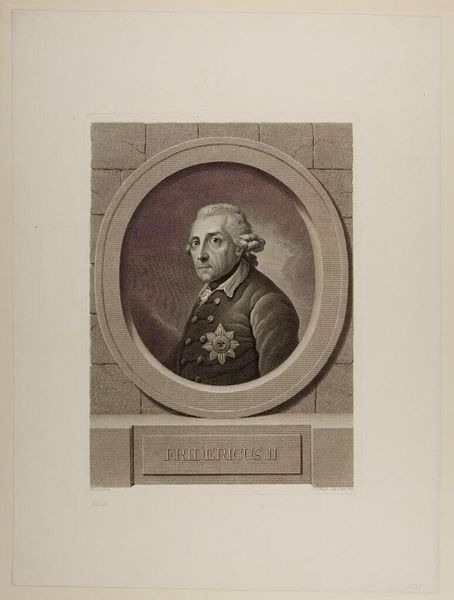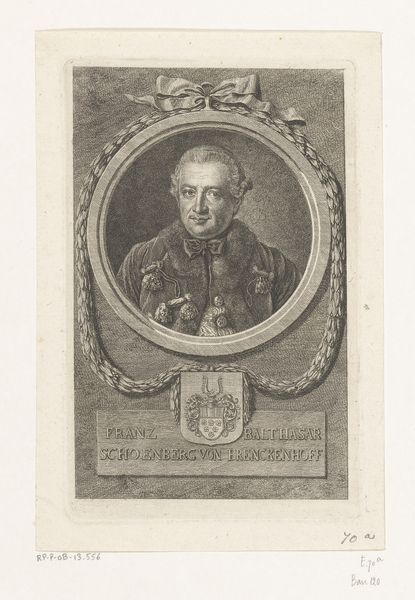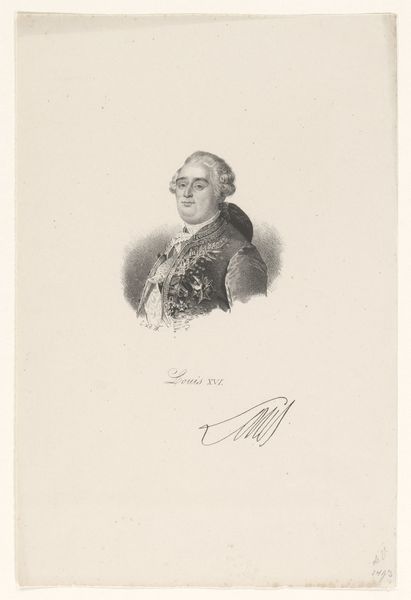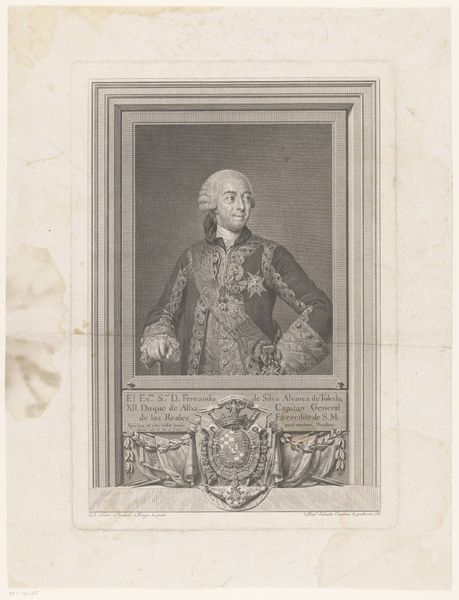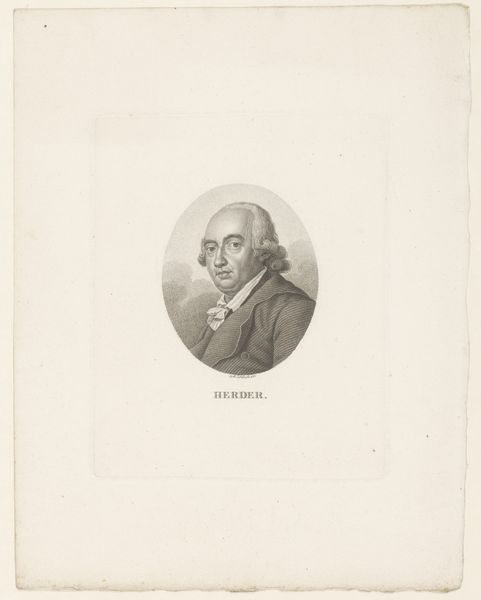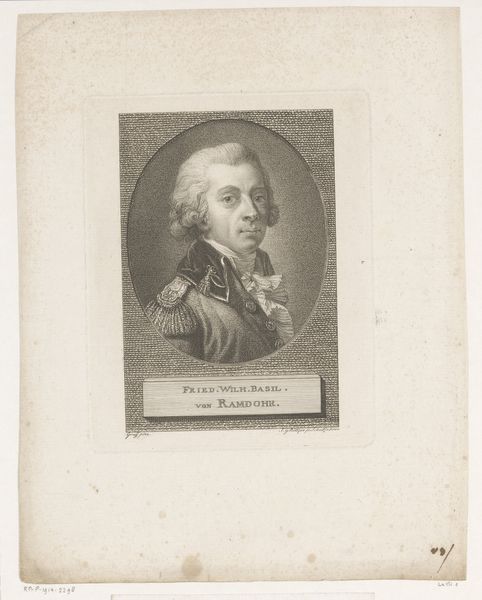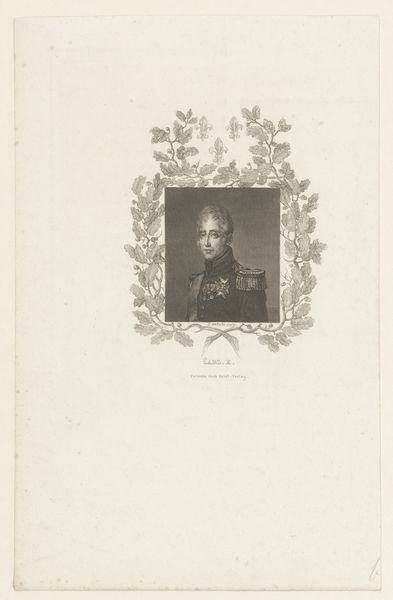
engraving
#
neoclacissism
#
old engraving style
#
classical-realism
#
form
#
line
#
history-painting
#
academic-art
#
engraving
Dimensions: height 160 mm, width 114 mm
Copyright: Rijks Museum: Open Domain
Conrad Geyer made this print of Frederick the Great sometime in the 19th century, using a technique of etching and engraving. The image is carefully designed to communicate the idea of imperial authority. It places the Prussian ruler within an elaborate frame, ornamented with foliage and topped with a Prussian eagle. The eagle clutches broken chains in its talons; this is likely a reference to the end of Napoleonic rule in the German lands. The star on Frederick’s chest is a symbol of high military rank. This imagery would have been instantly recognizable to a 19th century German audience. Prints like this were often made for mass distribution, offering a relatively inexpensive way for ordinary people to collect images of famous figures. In this sense, we can think of it as an early form of propaganda, an attempt to reinforce a sense of national identity in the decades after the Napoleonic Wars. To fully understand an image like this, we can examine newspapers, political pamphlets, and other examples of popular culture from the period. This will help to clarify how the print would have been understood by its original audience.
Comments
No comments
Be the first to comment and join the conversation on the ultimate creative platform.
